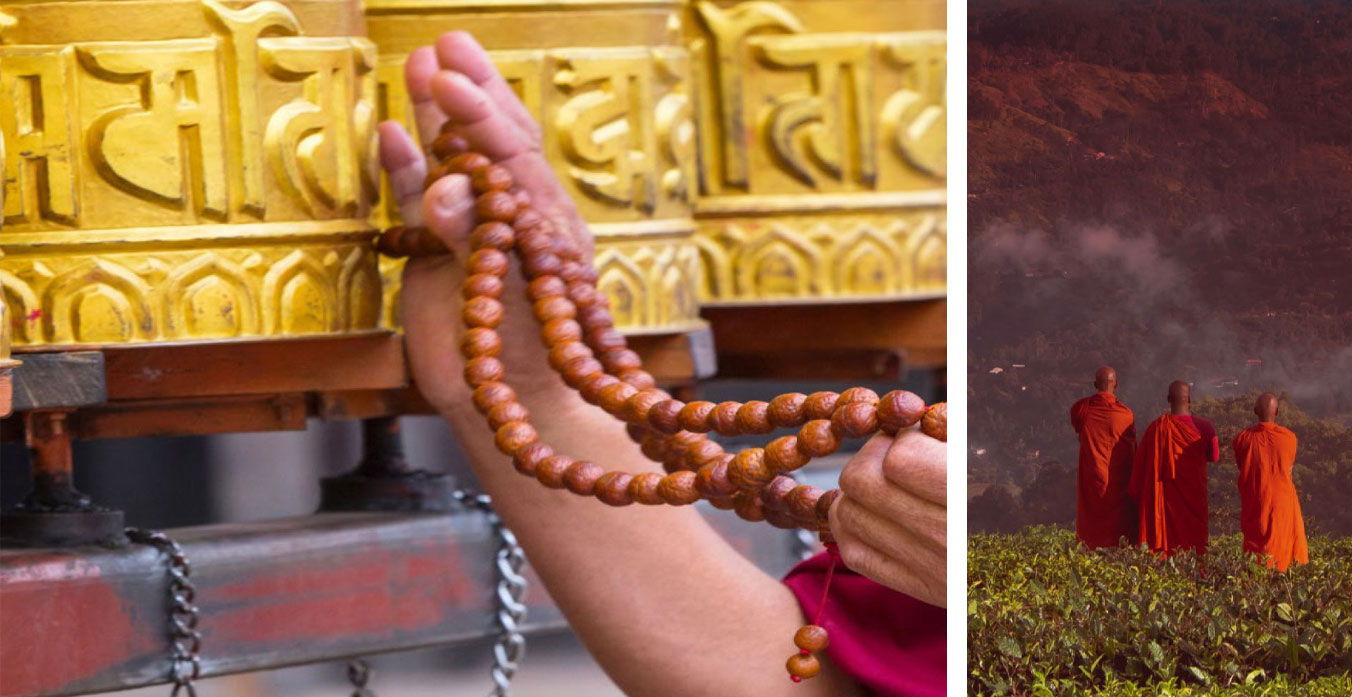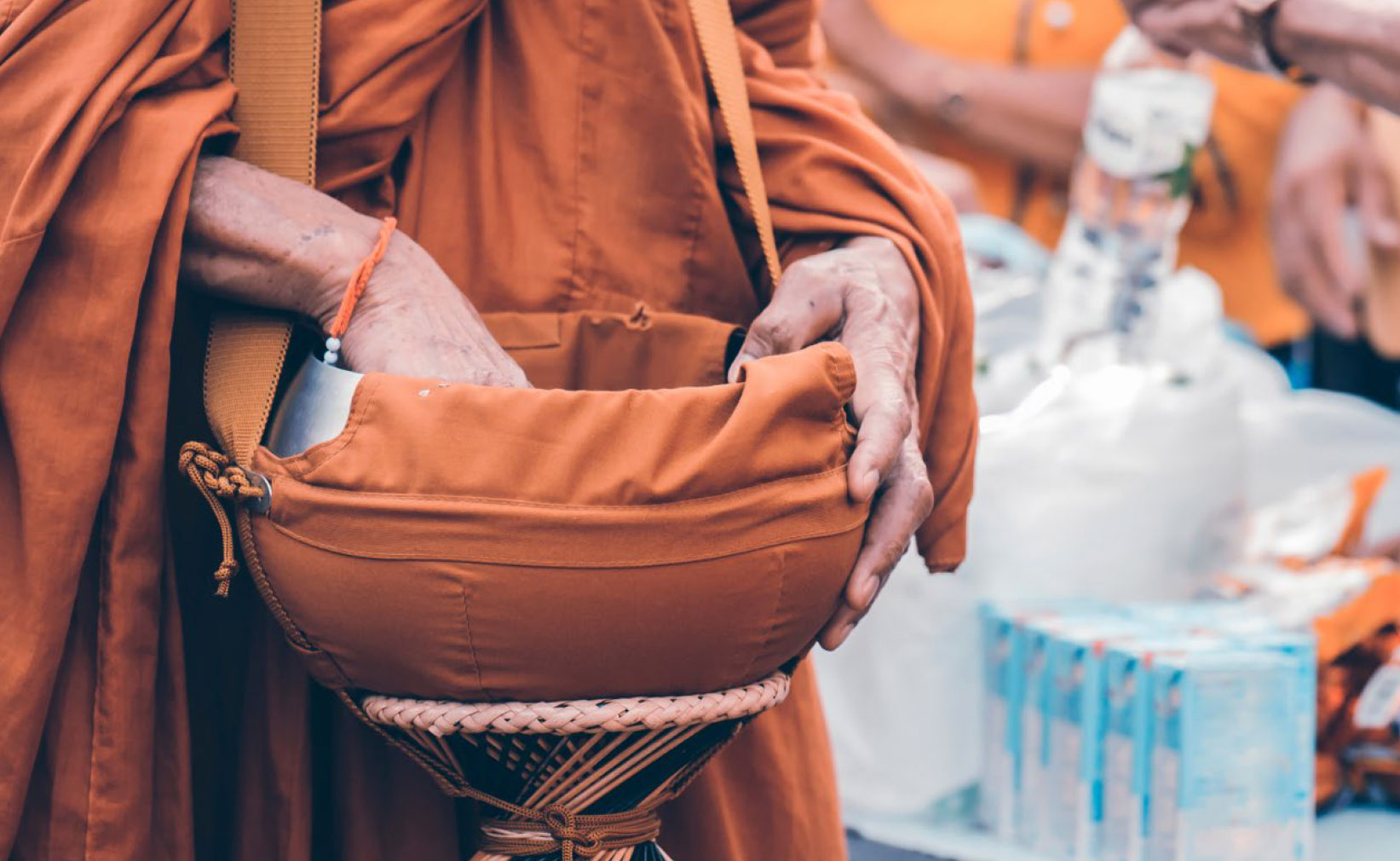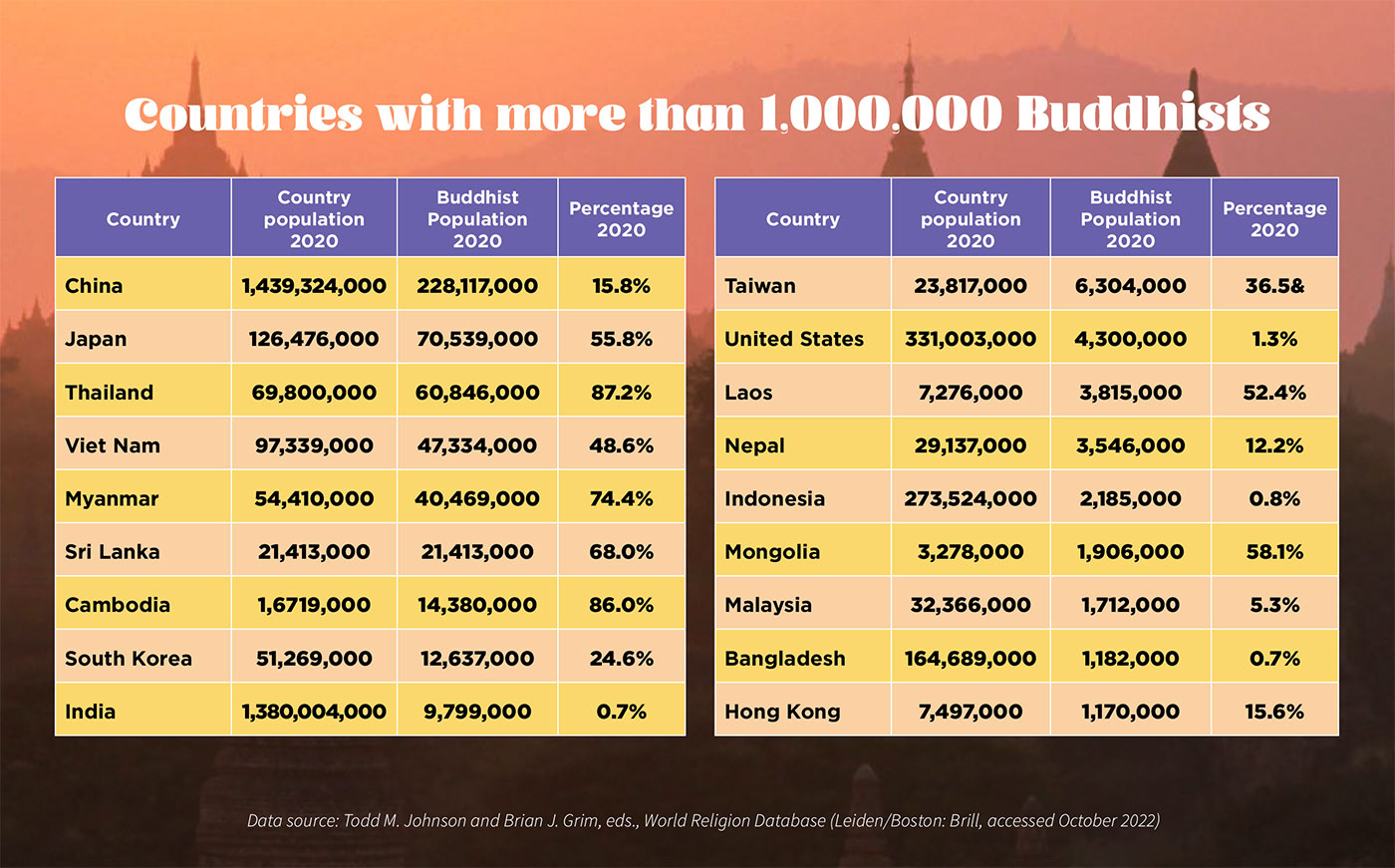
Muat turun Panduan Solat 21 Hari Sedunia Buddha dalam 10 Bahasa.Baca dalam 33 Bahasa menggunakan widget di bahagian bawah setiap halaman!
“Jangan terbakar; teruskan diri anda bersemangat dan menyala. Jadilah hamba-hamba Tuan yang berjaga-jaga, menanti dengan riang. Jangan berhenti dalam masa sukar; berdoalah dengan lebih gigih.” Roma 12:11-12 Versi MSG
Nasihat abad pertama dari Rasul Paulus ini boleh ditulis dengan mudah hari ini. Dengan kekacauan yang berlarutan akibat pandemik, perang di Ukraine, perang baharu di Timur Tengah, penganiayaan terhadap pengikut Yesus di kebanyakan dunia, dan kemelesetan ekonomi, adalah mudah untuk mengangkat tangan dan bertanya, “apa yang boleh orang buat?”
Paul memberi kita jawapannya. Tetap fokus pada Firman Tuhan, berharap bahawa Dia akan bertindak balas, dan "berdoa dengan lebih gigih."
Dengan panduan ini kami menjemput anda untuk berdoa secara khusus agar Tuhan dikenali oleh satu bilion orang di seluruh dunia yang sekurang-kurangnya penganut agama Buddha. Setiap hari, mulai 21 Januari 2024, anda akan mempelajari sesuatu tentang amalan dan pengaruh Buddha di tempat yang berbeza.
Panduan doa ini diterjemahkan ke dalam 30 bahasa dan diedarkan melalui lebih 5,000 rangkaian doa di seluruh dunia. Anda akan mengambil bahagian dengan lebih daripada 100 juta pengikut Yesus sebagai syafaat untuk jiran Buddha kita.
Banyak profil harian memfokuskan pada bandar tertentu. Ini disengajakan. Kota-kota yang diterangkan adalah kota yang sama yang dilayani oleh pasukan doa dari gereja bawah tanah pada hari-hari ketika anda berdoa! Syafaat anda atas kerja mereka di barisan hadapan adalah sangat penting.
Kami mengalu-alukan anda untuk menyertai kami, untuk terus "berharap dengan riang," dan "berdoa dengan lebih gigih."
Yesus Adalah Tuhan!

Prince Gautama was born in the southern part of modern-day Nepal in the sixth century BC. A local shaman noticed marks on the child’s body and foretold that he would grow up to be a world ruler and enlightened one. His father, desiring Gautama to be a great ruler, sought to protect him by providing a life of luxury.
At age 29, however, Gautama was exposed to the suffering outside the palace where he lived. As a result he spent six years as a wandering ascetic in search of a solution to the problem of suffering. In vain he tried various meditation techniques, hoping for insight. Finally, he resolved to sit beneath a bodhi tree until he had attained the enlightenment he sought. Though tempted by Mara (the Evil One), he persisted and eventually achieved what he believed to be a realization of supreme truth. From that point on he was considered to be the “Buddha”, which means an “Awakened One” or “Enlightened One”.
The Buddha found his original companions in the search for enlightenment and preached his first sermon to them. Unlike most religions there was no supreme deity involved. Instead he outlined the “Four Noble Truths”:
“Suffering” according to the Buddha arises due to our clinging to and craving for impermanent things that keeps us all caught in an ongoing process of death and rebirth where everything, even one’s very self, is impermanent and an illusion. The only way to get off that endless cycle of rebirths is to walk the “The Middle Path”, avoiding extremes and living with right understanding, thought, speech, conduct, livelihood, effort, mindfulness, and finally right concentration. The end-goal is not eternal communion with God, but rather—like the flame of a candle being extinguished—a state where craving is ended.
People see Buddhism as their own folk religion, even though it does not relate to a high deity. As such, it’s like a blanket that falls on existing cultures and conforms to the landscapes underneath. In Tibet, the Bon religion of shamanism was overlaid with Buddhist monasteries for meditation. In Buddhist Thailand, lay people offer monks cigarettes in their alms bowls; in Buddhist Bhutan, however, smoking is a sin. The Thai Buddhist council strictly disallows women’s ordination and forbids women from entering holy places inside temple grounds, yet Nepal and England ordain female monks. Cambodian Buddhists have no discussion in the temple concerning care for the environment, while Western Buddhists incorporate environmental activism into their practice of the dharma.
* For clarity, this guide follows the Sanskrit spelling of Buddhist terms, rather than the Pali spelling. Dharma is the Sanskrit spelling; the Pali spelling would be dhamma.

Theravada Buddhism
emerged from Sri Lanka, where the Buddha’s sermons and teachings were first canonized. It focuses on the attainment of enlightenment through personal meditation and good deeds. Myanmar, Thailand, Cambodia, and Laos follow this tradition.
Mahayana Buddhism
emerged based on texts attributed to Buddha, which taught that a bodhisattva, or enlightened being, could choose to delay entering nirvana (the ultimate spiritual goal of liberation) to deliver other sentient beings from their karmic suffering (based on a person’s past actions). This stream of Buddhism was traditionally practiced in China, Japan, Vietnam and the Korean peninsula.
Tibetan Buddhism
arose in India in AD sixth century, with a focus on accelerating enlightenment through ritual practices and visualizing heavenly bodhisattvas.
In recent years Westerners have adopted various forms of Buddhism that focus primarily on a quest for inner peace. Some have joined Theravada monasteries, seeking spiritual purification through meditation and by following the five basic rules of conduct. Others have committed themselves to a Tibetan lama (monk), study the Tibetan texts and learn chanting. Still others follow a Westernized form that mixes Asian traditions with Western notions of Buddhism. They often continue in their previous occupations and wear everyday clothes, but spend time in meditation and attend retreats.
In recent years Westerners have adopted various forms of Buddhism that focus primarily on a quest for inner peace. Some have joined Theravada monasteries, seeking spiritual purification through meditation and by following the five basic rules of conduct. Others have committed themselves to a Tibetan lama (monk), study the Tibetan texts and learn chanting. Still others follow a Westernized form that mixes Asian traditions with Western notions of Buddhism. They often continue in their previous occupations and wear everyday clothes, but spend time in meditation and attend retreats.


N/A


110 BANDARAYA - Projek IPC a US 501(c)(3) No 85-3845307 | Maklumat Lanjut | Tapak oleh: IPC MEDIA
110 BANDARAYA - Projek IPC a US 501(c)(3) No 85-3845307 | Maklumat Lanjut | Tapak oleh: IPC MEDIA